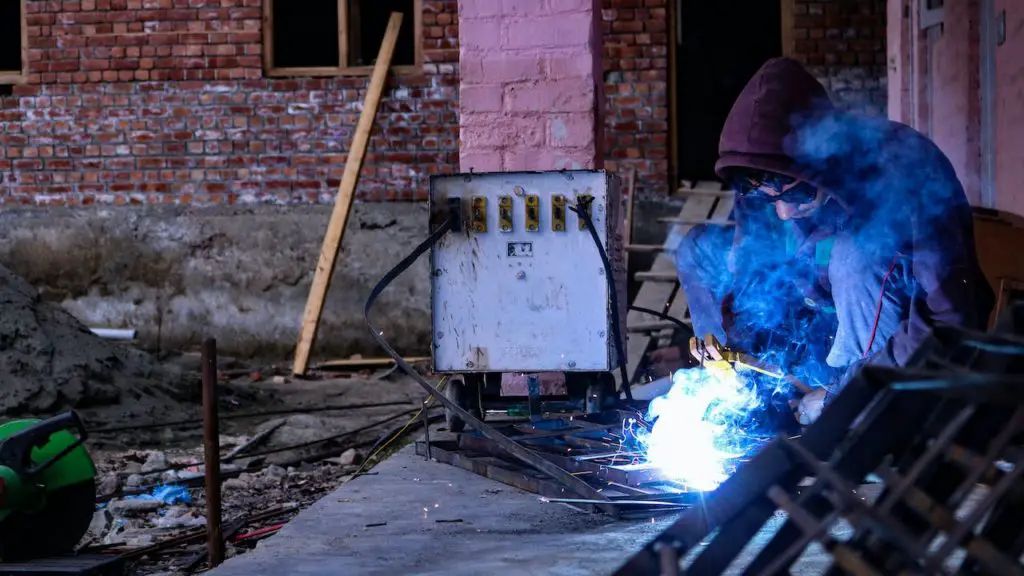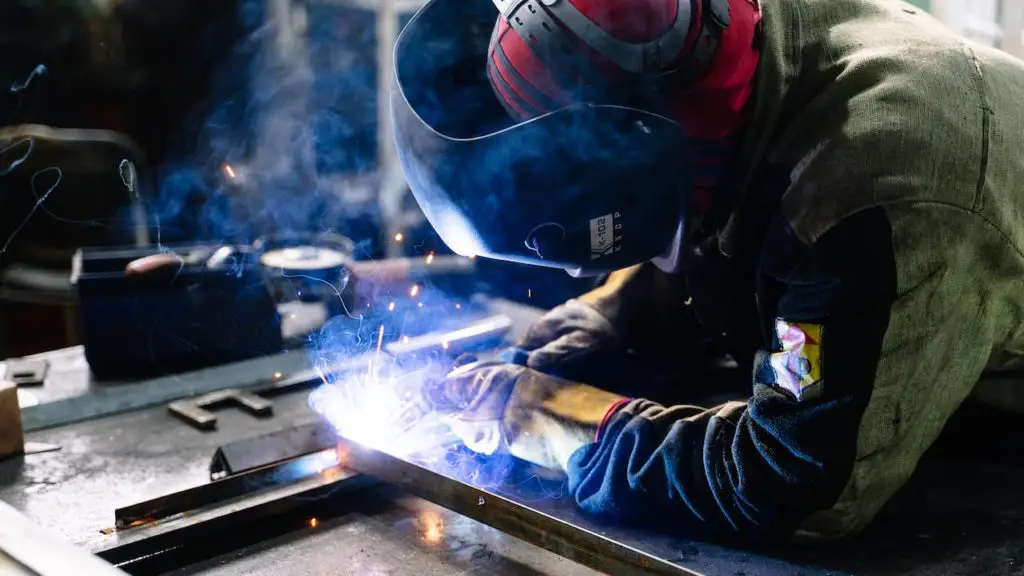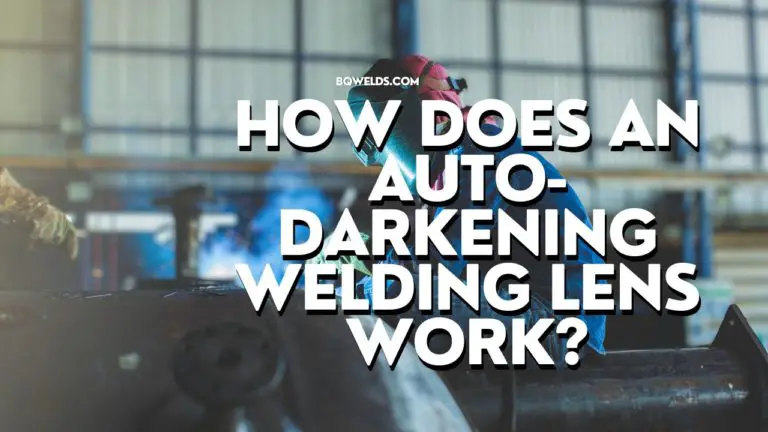Many welders marvel at the technology behind auto-darkening welding lenses. The ability to switch from a light shade to a dark tint within milliseconds of an arc being struck while still providing clear, precise views of their work in progress. But how does this incredible tool work?
In this blog post, we’ll delve into the inner workings of an auto-darkening welding lens.
How Does An Auto-Darkening Welding Lens Work?
An auto-darkening welding lens works by using a combination of light sensors and liquid crystal display (LCD) technology. When the lens’s light sensors detect a welder first strikes an arc, the bright light it produces. This detection triggers the auto-darkening feature.
The lens consists of several layers, one of which contains liquid crystals. When the light sensors detect the arc, an electric charge is sent to the liquid crystals, causing them to align. This alignment blocks light, effectively darkening the lens almost instantaneously. This all happens in a fraction of a second, providing the welder with immediate protection from the intense light of the arc.
One additional point to note is that the darkness level or shade of the lens can be adjusted. This gives welders the flexibility to set a comfortable light level for them and suitable for the type of welding they are doing.
The auto-darkening welding lens truly is a marvel. It combines the power of technology with the art of welding, creating a tool that is indispensable for welders. It’s a shining example of how technology can enhance and safeguard the practice of skilled trades.
What Causes Auto-Darkening Welding Lenses To Darken?
The auto-darkening feature of welding lenses is triggered by the sudden increase in light intensity produced when an arc is struck during welding. Light sensors built into the lens detect this bright flash of light.
Once the sensors recognize the intensity and wavelength of light that is characteristic of a welding arc, they send a signal to a set of liquid crystals housed within the lens. These liquid crystals respond almost instantaneously to an electric charge, changing their alignment to block light and darken the lens.
The beauty of this design is how quickly it reacts, providing the welder with immediate eye protection without interrupting their work. This automatic response to bright light is what gives the auto-darkening welding lens its name and its value to welders around the world.

Can You See Through An Auto-Darkening Welding Lens?
Yes, you can see through an auto-darkening welding lens. When inactive, the lens usually has a light shade that allows welders to see their work environment. This is advantageous during set-up stages or between welds.
However, once an arc is struck, the lens darkens to protect the welder’s eyes from the intense brightness and harmful ultraviolet and infrared light emitted by the arc. Despite this darkening, the lens still allows the welder to see the weld pool and surrounding work area.
The visibility through the lens and the speed of transition from light to dark significantly contribute to the high productivity and safety of welders using auto-darkening welding lenses.
Why Is My Auto-Darkening Welding Lens Not Staying Dark?
If your auto-darkening welding lens isn’t staying dark, several reasons could be causing this issue:
- Battery Issues: Auto-darkening welding lenses are often powered by batteries. If your lens isn’t staying dark, it could mean the battery is low or dead. Some lenses use solar power in conjunction with a battery, so lack of exposure to light could also be a factor.
- Sensitivity Settings: Your lens has sensitivity settings that determine how easily it darkens in response to light. If your settings are too low, the lens may not recognize the welding arc.
- Delay Settings: This setting controls how long the lens stays dark after the arc stops. If it’s set to a short delay, the lens could lighten too quickly.
- Obstructed Sensors: Auto-darkening lenses rely on sensors to detect the arc’s light. If these sensors are obstructed or dirty, they may not function properly.
- Age and Wear: Over time, the components of your auto-darkening lens can wear out or become less responsive, especially with heavy use.
If you’re experiencing problems with your auto-darkening lens, check these areas first. Always refer to your lens manual or reach out to the manufacturer if you’re unsure about how to troubleshoot or adjust your lens settings.
Do Auto-Darkening Welding Lenses Have Batteries?
Yes, most auto-darkening welding lenses do have batteries. Replaceable batteries, rechargeable batteries, or a combination of solar power and batteries either power them.
Solar cells in the lens capture light from the welding arc to recharge the internal battery, extending the battery life significantly.
However, if the welding lens is not used regularly or stored in a dark place, the battery may drain. It’s essential to check the manufacturer’s guidelines for specific instructions on battery replacement and management to ensure the lens functions correctly.
What Is The Correct Auto-Darkening Welding Lens Shade To Use In My Welding?
The correct shade for your auto-darkening welding lens depends on the type of welding you will be doing, as different processes produce different levels of light intensity.
- Gas Tungsten Arc Welding (GTAW) or Tungsten Inert Gas (TIG): For this type of welding, shade numbers 8 to 10 are usually adequate due to the relatively lower light intensity produced.
- Gas Metal Arc Welding (GMAW) or Metal Inert Gas (MIG) and Flux Cored Arc Welding (FCAW): These methods create a brighter arc. Therefore, a darker shade of 10 to 12 is generally recommended.
- Shielded Metal Arc Welding (SMAW) or Manual Metal Arc (MMA): For this type, a shade in the range of 10 to 14 is suitable, depending on the electrode size and current.
- Plasma Arc Welding (PAW) and Plasma Arc Cutting (PAC): The arc’s brightness in these processes demands a lens shade of 8 to 14, depending on the amperage.
- Carbon Arc Welding (CAW): Given its extreme brightness, it demands the darkest lens shade, typically 14.
These shade numbers are general recommendations. Personal comfort and visibility also play a role in choosing the appropriate lens shade. Always ensure you can see your work while feeling comfortable and your eyes are adequately protected.
Keep in mind that these are general recommendations, and factors such as arc current, electrode size, and base material thickness may require adjustments to the shade level.
It’s always best to consult with your welding instructor or refer to industry guidelines for specific recommendations based on your welding application.

My Auto-Darkening Lenses Don’t Darken Until It Detects An Arc – Can This Damage My Eye?
No, this should not damage your eyes. Auto-darkening welding lenses provide a clear view of your work area until they detect the bright light from an arc. Upon detecting the arc, they darken almost instantaneously. This design allows welders to work more efficiently without continuously lifting and lowering the helmet.
However, if you notice that the lens is not darkening as fast as it should when the arc is struck or not darkening at all, it’s essential to stop welding and check your lens, as this could indicate a malfunction.
Between Solar And Battery-Powered Lenses, Which One Is Better?
Comparing solar-powered lenses and battery-powered lenses reveals that both have their unique merits and demerits.
Solar-Powered Lenses:
- These lenses use solar cells to power the auto-darkening feature.
- They are often more eco-friendly and cost-effective in the long run since they don’t require battery changes.
- The welding arc itself can keep the lens powered.
- If the lens is stored in a dark place for an extended period, it might not function correctly immediately upon use.
Battery-Powered Lenses:
- These lenses are either powered by replaceable or rechargeable batteries.
- They can be used right away, regardless of light conditions or how long they’ve been stored.
- They require regular maintenance in terms of battery replacement or recharging, which can be a drawback for some users.
Verdict: Neither type is categorically better than the other.
The choice between solar-powered and battery-powered lenses depends on your needs, preferences, and work environment.
If you prioritize sustainability and low maintenance, solar-powered lenses might be the best fit. On the other hand, if immediate readiness and consistent performance under any conditions are essential to you, battery-powered lenses could be the better choice.
Always refer to the manufacturer’s guidelines and consult with a professional if in doubt.
Should I Choose A Fixed Shade Or Variable Shade Auto-Darkening Welding Lens?
Choosing either lens depends largely on the type of welding work you do.
If your welding tasks vary, a variable shade lens would be a better choice. However, if you consistently work with the same welding process and conditions, a fixed shade lens could serve you well. As always, personal preference, comfort, and visibility should also factor into your decision.
Conclusion
In conclusion, auto-darkening welding lenses enhance safety and efficiency in welding. It automatically adjusting the lens shade in response to the brightness of the welding arc. The options of fixed shade and variable shade lenses cater to different welding requirements.
In contrast, the choice between solar-powered and battery-powered lenses depends largely on individual preferences and work conditions.


Add comment